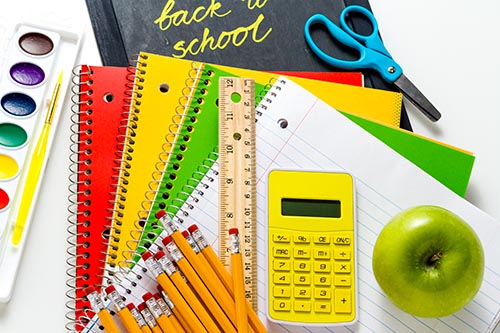Brick-and-mortar Stores Preferred by Shoppers
Predictions are that USA parents will spend a record-breaking $41.5 billion on back-to-school supplies this year, a 12% increase over last year, and brick-and-mortar stores are preferred over online shopping.
The National Retail Federation (NFR) predicts back-to-college spending to increase even more – $20 billion to a record $94 billion, driven by high-end electronics and dorm furnishings.

Image: Envato Elements
The NRF bases its back-to-school forecast on the consumer survey it has been conducting annually with Prosper Insights and Analytics over the past two decades. This year’s survey included close to 8,000 consumers and was conducted between June 30 and July 6.
“Charge it!”
A Motley Fool Ascent survey found that 30% of parents will use credit cards for all or some of their shopping and the average they expect to spend is $895, with clothing and electronics being the most expensive categories. The Motley Fool Ascent distributed a survey via Pollfish on July 17, 2023 to 2,000 American adults with one or more children. Survey results were post-stratified to generate a nationally representative sample for gender and age.
The survey also found that 47% of shopping will be based on lists schools provide to retailers.
Indications are that Americans’ concern about inflation has lessened compared to last year, according to Forbes magazine. “Consumers are adjusting to inflation by comparison shopping for deals, or trying lower-priced brands, but are not shifting to discount stores in the numbers they did during the 2008 recession,” according to Katherine Cullen, the NRF’s vice president of industry and consumer insights.
On the other hand, some parents started their shopping early, looking for good deals.
In-store Preferred
Unlike holiday shopping, back-to-school purchases tend to be times when parents seek out an in-store experience where their children can see multiple options and participate in choosing their own backpack, lunch box, or first-day-of-class outfit. And when those shoppers are in stores, impulse purchases become more likely.


